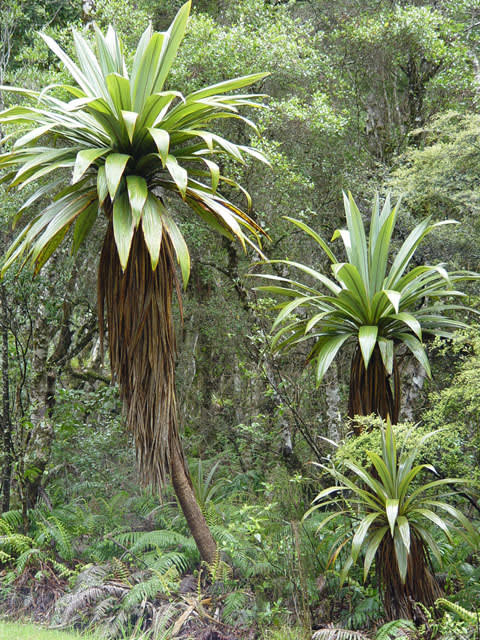
🌿 Morphology
🌞 Growing conditions
🌍 Origin and family
🌾 Uses
Warning: Despite the care taken in writing this sheet, it is essential to cross-reference sources before using or consuming any plant. When in doubt, consult a qualified professional
Permaculture uses
Cordyline indivisa is primarily an ornamental plant in permaculture systems. Its striking foliage adds vertical interest and architectural structure to gardens. The young shoots and heart are edible when cooked, though not commonly used. It provides shelter and nesting sites for birds.
Permapeople description
Blue Dracaena, a palm-like tree with long, broad leaves.
Botanical description
Cordyline indivisa is a monocot tree endemic to New Zealand. It is characterized by its single, unbranched trunk that can reach up to 20 meters in height. The leaves are long, sword-shaped, and blue-green, reaching lengths of 1-2 meters and a width of 5-10 cm. They are arranged in a dense, terminal crown. In mature trees, the trunk branches and produces large, panicle-like inflorescences bearing small, fragrant, creamy-white flowers. These are followed by bluish-white berries. It prefers moist, well-drained soils and full to partial sun. The plant is relatively slow-growing.
Companion planting
Cordyline indivisa can be grown with other native New Zealand plants that prefer similar growing conditions. Avoid planting it near plants that require excessively dry or alkaline soils.
Propagation methods
Propagation is typically from seed, which requires pre-treatment such as scarification or soaking to improve germination rates. It can also be propagated by stem cuttings, although this method is less reliable.
History and traditions
Traditionally, the Maori people of New Zealand used the long, strong leaves of Cordyline indivisa for weaving clothing, mats, and rope. The young shoots were cooked and eaten as a food source, although this was more common with other Cordyline species. The plant also held spiritual significance.
Usage calendar
Flowering occurs in spring to early summer (October to December in the Southern Hemisphere). Seed collection follows in late summer to autumn. Planting is best done in spring. Pruning is generally not required, but dead or damaged leaves can be removed at any time.
